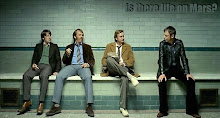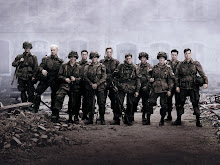The Sections
1. In the bread shop
- Little boy in brown shorts suit and cap
- Elderly man in morning suit
- Bread shop - shows period of time
- Horse neighing in the street - period of time
- Only bread in shop - shows not a supermarket
- Dialogue - "there you go lad" old fashioned
- Bell ring as door opens
2. Cart
- Horse and cart, old fashioned busy cobbled side street - period
- Clothes hanging by the side of the road
- Dirty and dingy old streets of London
- Horse neighs - boy gets scared and runs away, man on cart angry with him - period
- Titanic posters - period of time
- Running through the backstreets, squeezing through the gates hiding back in with crowd - loses his cap and shirt slightly changes - showing changing period of time
3. Women's March
- Suffragettes - votes for women signs, men in old fashioned suits, old style policeman arresting a woman
- Man with moustache and top hat - middle class man
- Women marching down the street with posters and signs
- Long shot as boy runs through unnoticed - children not as important in period
- Old fashioned cobbled streets and dirty houses - no cars or transport
4. Soldiers
- Boy walks alongside soldiers holding loaf of bread under his arm like a gun
- Smiles at the soldier aspiring to be like him
- Same old fashioned streets and houses
- Little girls running along behind - ribbon coming off of her straw hat, wearing a day dress
- Larger house in the background - getting to richer part of London
- Salutes soldier
5. Street with Car
- Old fashioned black motor car
- Two men in suits and a woman standing next to the car
- Car more modern than period of previous scene - showing progression through time
- The dog of the men and woman chase him
- Runs down an alley and kicks a can
6. War-bombs, people passing and plane
- Follows the can into the street destroyed by war
- He looks around at the destruction, bombed building, furniture scattered and looks worried and afraid
- He watches the people leaving their destroyed houses with their few surviving possessions
- Clothing signifies the war rationing
- Winston Churchill speech on radio - shows hope and determination
- Boy stands on top of pile of debris, looks at the plane passing - shows WWII as planes used
- Dull colours to show sadness of the era
7. Street Party
- Everyone is happy and smiling - contrast to previous period
- People wearing paper crowns and hats, as though celebrating
- Boy in pirate outfit smiles at boy with an inviting look - celebrating Queens Coronation
- Lots of flags along the street, massive table with all the neighbours coming together with food and drink
- The boy steals a glass of lemonade and crawls under table to drink it
- Colours in the scene are brighter than previous, show happiness of this period and that it is summer
8. Girls/Football Players
- The girls are dressed in bright colours and short skirts/dresses, one in a yellow dress with red boots, and their hair backcombed and styled showing that it is now the 60s
- The boy is now wearing a brown jacket with a t-shirt underneath
- The bread is still wrapped in brown paper
- The football players in the car are shouting "CHAMPIONS!" with England flags - 1966 England won the World Cup
- The car is a classic cars of the 60s
- The houses are small and terraced showing a working class area
9. Street with Asians and TV Shop
- The boys clothing has changed again, now an open collared shirt with a jumper with colourful diagonal stripes indicating it is now 1970s
- The Asian couple show that England has become more multi-cultural
- The television shop shows that technology is developing and becoming more advanced and available to working class
10. Cole not Dole strike/protest
- Miners chanting "cole not dole" because the mines have been shut under Thatcher and therefore have to go on the dole
- Police have shields and helmets showing that it is a riot, around 1984-5 the miners' strike
- Boy is standing between the two sides, someone says "Eh lad, is it past your bed-time?" - this shows that the streets were becoming more dangerous
- The boy is now wearing a brown bomber jacket and a bright blue t-shirt - showing that it is the 80s
- The boy runs through a field of wheat - possibly to do with the bread he is taking home
11. Fireworks
- Night time with fireworks - celebrating the millenium
- Tracking shot of running along by a river
- He jumps over the bench - something he would not have been able to do back in the 50s
12. Home
- It is day again, two boys are leaning against a car with a football, showing now children can just hang around on the street
- The bomber jacket has changed to a brown hoody - fashion of 2000
- He is now home, sits in the kitchen at the table and the loaf of bread is now wrapped in a brown bag saying Hovis
- Mum says "Is that you home love?" with a northern accent, in the north, and he says "yeah" with a cheeky grin thinking about what it took him to get the loaf of bread
- The bread is now on a bread board, sliced, and a hand (the boys) grabs a slice
- The loaf is then shown on a pinkish white background with the tag-line "As good today as it's always been" showing the reason why the boy has journeyed through time
13. Sound throughout the sequence
- There is music in the background, quick paced with climaxes after some dialogue when the boy is running
- The music slows down and mellows at the end and finishes with gentle piano showing peace and calm now after the previous destruction
- The music is mostly in major key showing happiness, contradicting the destruction of some scenes
- There is chattering, diegetic sound, when there are other people in the scene
- Other diegetic sound includes: plane, cars, cheering, chanting, a horse neighing
- There is some dialogue, onscreen, offscreen and from the radio (Churchill giving encouragement)
14. Narrative/Story development through whole advert
The advert starts in Victorian time, around 1880s, and spans over time to present day, 2000s. The boy gets the bread from the bakers and begins to run home, running through time from scene to scene to show what Hovis has survived through and to show that it is still "As good today as it's always been" (the tagline).





No comments:
Post a Comment